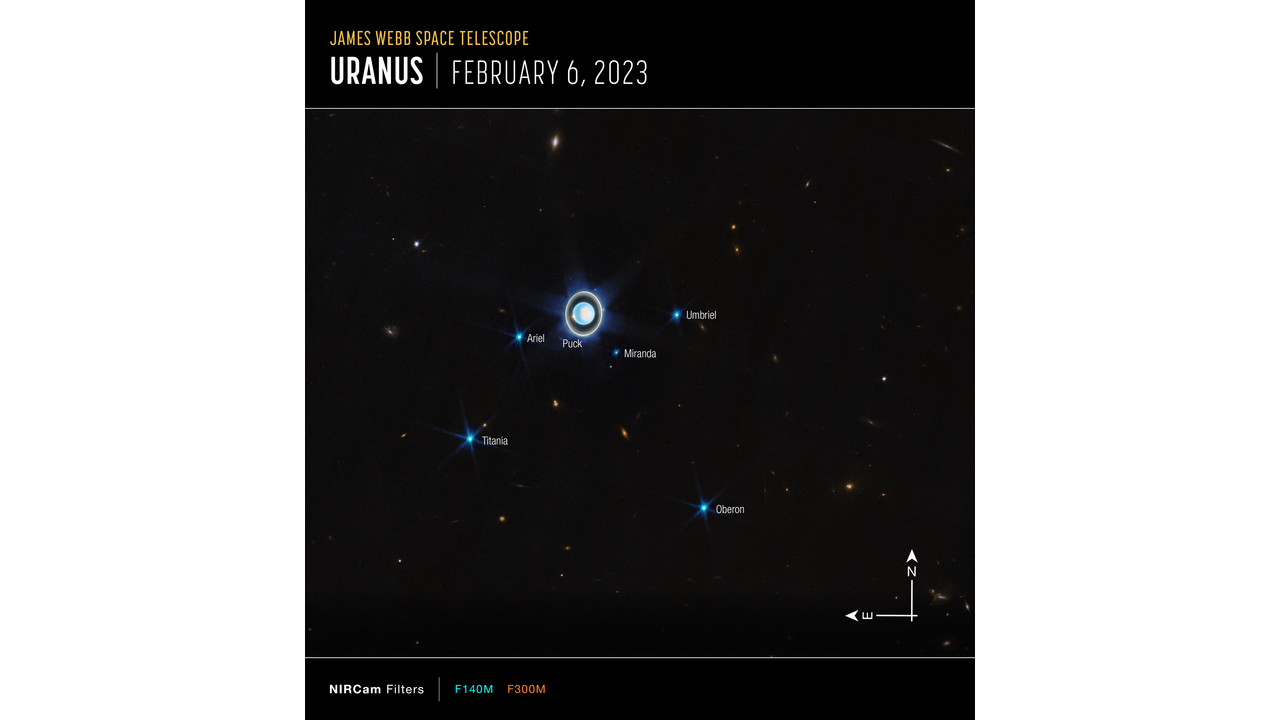The James Webb Telescope Just Took a Truly Incredible Photo of Uranus [View all]
Story by Jackie Appel • Yesterday 11:09 AM
NASA has just released new images of Uranus, the seventh planet in our solar system.
Captured by JWST, the images show incredible details of the planet and its surrounding rings and moons.
Researchers believe that follow-up imaging with the telescope will provide even more detail in the near future.
JWST has done it again. Recently, the team behind the James Webb Telescope released its new images of Uranus, the seventh planet from our Sun. And they’re stunning.
Uranus has been an oddball for a lot longer than we’ve been looking at it. Most uniquely, the multi-ringed ice giant is the only planet to spin on its side, almost perpendicular to its orbit. The above photo isn’t just turned sideways—the rings actually go that way.
The planet also has a number of other interesting features, including a transient polar cap that seems to appear in the summer and disappear in the winter. We don’t yet know what causes that area to brighten and dim the way it does, but researchers are hoping the new data Webb has collected along with theses images will provide a bit of insight into the phenomenon.
Additionally, JWST has given us an incredibly clear glance at 11 of Uranus’s 13 rings, which vary in brightness from ring to ring so much that it’s often difficult to distinguish one from the other. To get 11 on full display right off the bat is impressive, and researchers believe future Webb imaging will reveal the other two in short order.

More:
https://www.msn.com/en-us/news/technology/the-james-webb-telescope-just-took-a-truly-incredible-photo-of-uranus/ar-AA19yrtd
~ ~ ~
New Webb Telescope Image Of Uranus
By Keith Cowing
Press Release
April 6, 2023

Uranus
Following in the footsteps of the Neptune image released in 2022, NASA’s James Webb Space Telescope has taken a stunning image of the solar system’s other ice giant, the planet Uranus.
The new image features dramatic rings as well as bright features in the planet’s atmosphere. The Webb data demonstrates the observatory’s unprecedented sensitivity for the faintest dusty rings, which have only ever been imaged by two other facilities: the Voyager 2 spacecraft as it flew past the planet in 1986, and the Keck Observatory with advanced adaptive optics.
The seventh planet from the Sun, Uranus is unique: It rotates on its side, at roughly a 90-degree angle from the plane of its orbit. This causes extreme seasons since the planet’s poles experience many years of constant sunlight followed by an equal number of years of complete darkness. (Uranus takes 84 years to orbit the Sun.) Currently, it is late spring for the northern pole, which is visible here; Uranus’ northern summer will be in 2028. In contrast, when Voyager 2 visited Uranus it was summer at the south pole. The south pole is now on the ‘dark side’ of the planet, out of view and facing the darkness of space.
This infrared image from Webb’s Near-Infrared Camera (NIRCam) combines data from two filters at 1.4 and 3.0 microns, which are shown here in blue and orange, respectively. The planet displays a blue hue in the resulting representative-color image.
More:
https://spaceref.com/science-and-exploration/new-webb-telescope-image-of-uranus/

